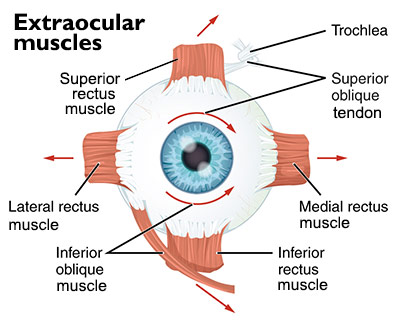
Researcher wants to unlock the mysteries of strabismus
She hopes new information will yield an alternative to surgery, which is standard care for people who are cross-eyed or have a wandering eye.Strabismus, also known as being cross-eyed or having a wandering eye, is one of the most common reasons that children undergo eye surgery. But little has changed in its treatment since the 1800s, according to Jolene Rudell, acting assistant professor of ophthalmology at the University of Washington School of Medicine.
“We still don’t understand why or how some children develop strabismus,” she said.

With the goal of advancing treatment, Rudell is working to detect what causes strabismus. She said research has shown that sometimes problems in the brain can lead to strabismus, noting it’s common for patients with brain injuries and strokes to develop the eye disease. She said there is also evidence that abnormalities in the eye muscles that move the eyes, known as the extraocular muscles, may play a role.
She and colleagues are examining extraocular muscle tissue removed during surgery to study the morphology of neuromuscular junctions – the nerve connections that direct the muscle’s movement. Preliminary data suggests that patients with strabismus might have a significantly higher percentage of a specific type of synapse, an “en grappe,” or grapelike, synapse, than expected.
The findings might inform new treatments for strabismus, such as strengthening the synapses that communicate to the extraocular muscles.
“I want to bring attention to a field that has not generated a lot of scientific interest,” Rudell said.
Because little research, if any, has explored the role of extrocular muscles in strabismus, surgery remains the standard treatment, and it is effective for most children. Some literature indicates, however, that more than half of children who undergo strabismus surgery need a second such procedure to correct the condition. And surgery is not guaranteed to succeed: Some patients may remain cross-eyed or experience an overcorrection.
Rudell added that, in muscular dystrophy, children experience generalized muscle wasting – except in their eye muscles. It’s another area of interest and potential clues for researchers.
Rudell’s research is being supported by a $65,000 award from the Knights Templar Foundation, a group that supports research to cure childhood blindness.
For details about UW Medicine, please visit https://uwmedicine.org/about.
Tags:strabismus
